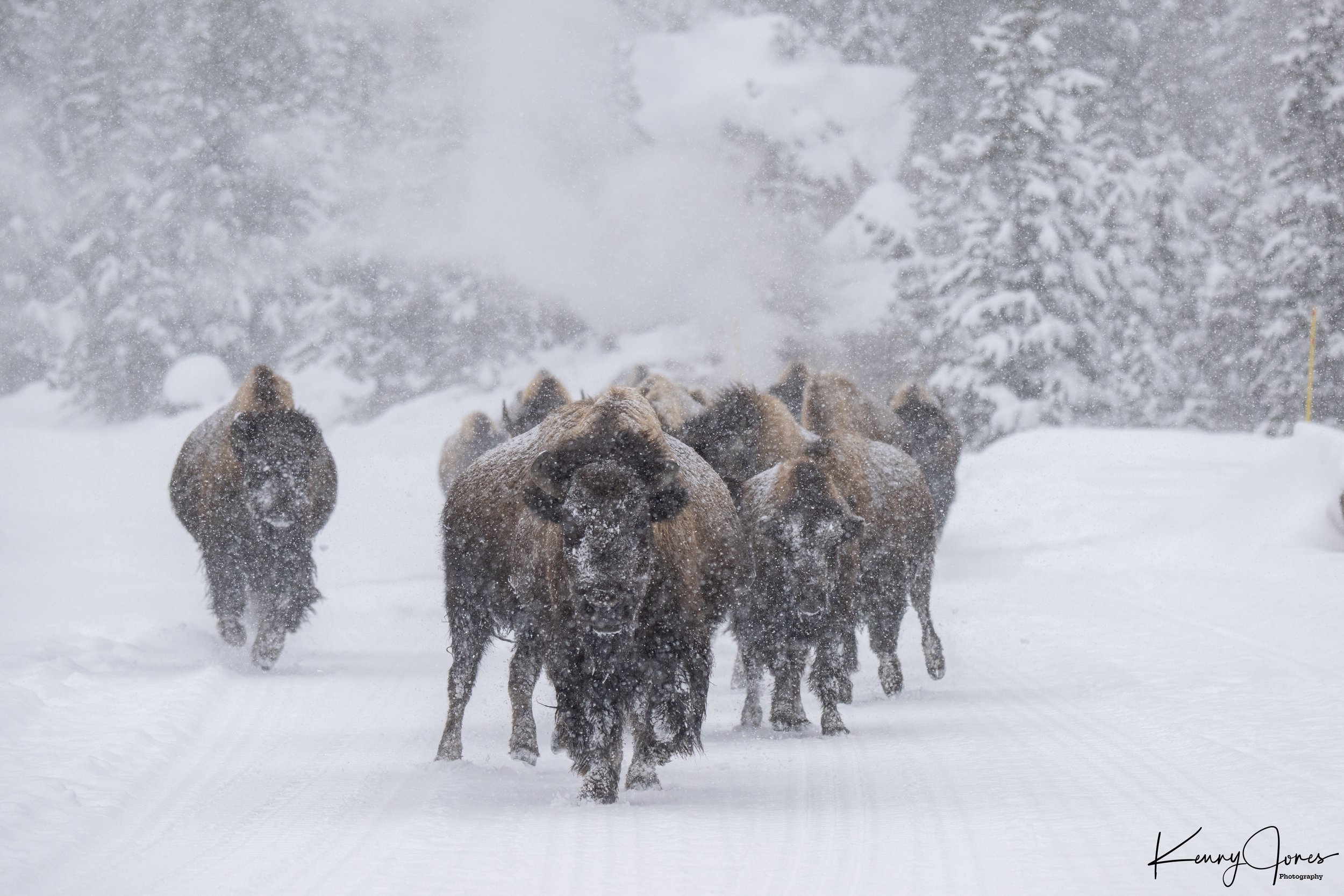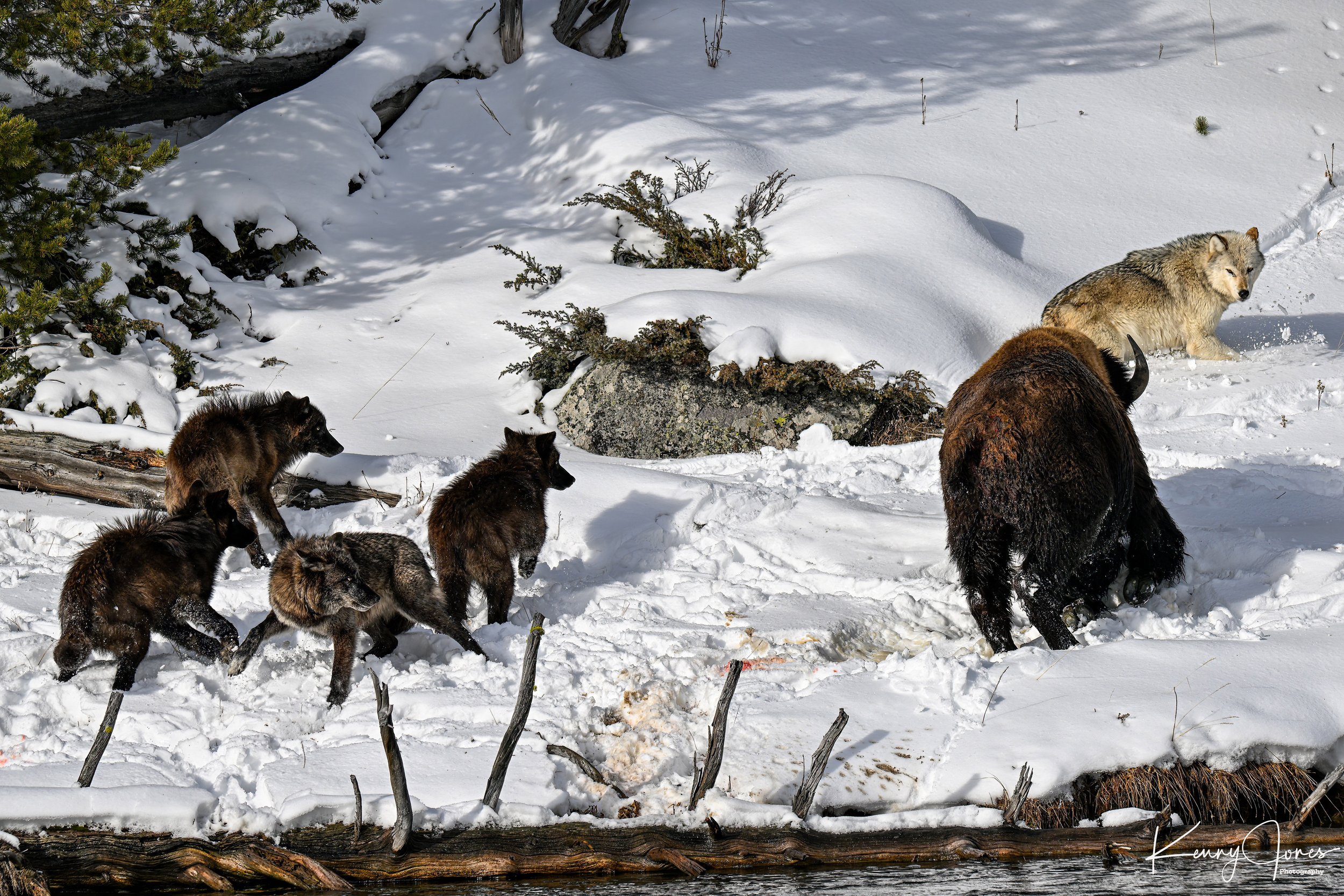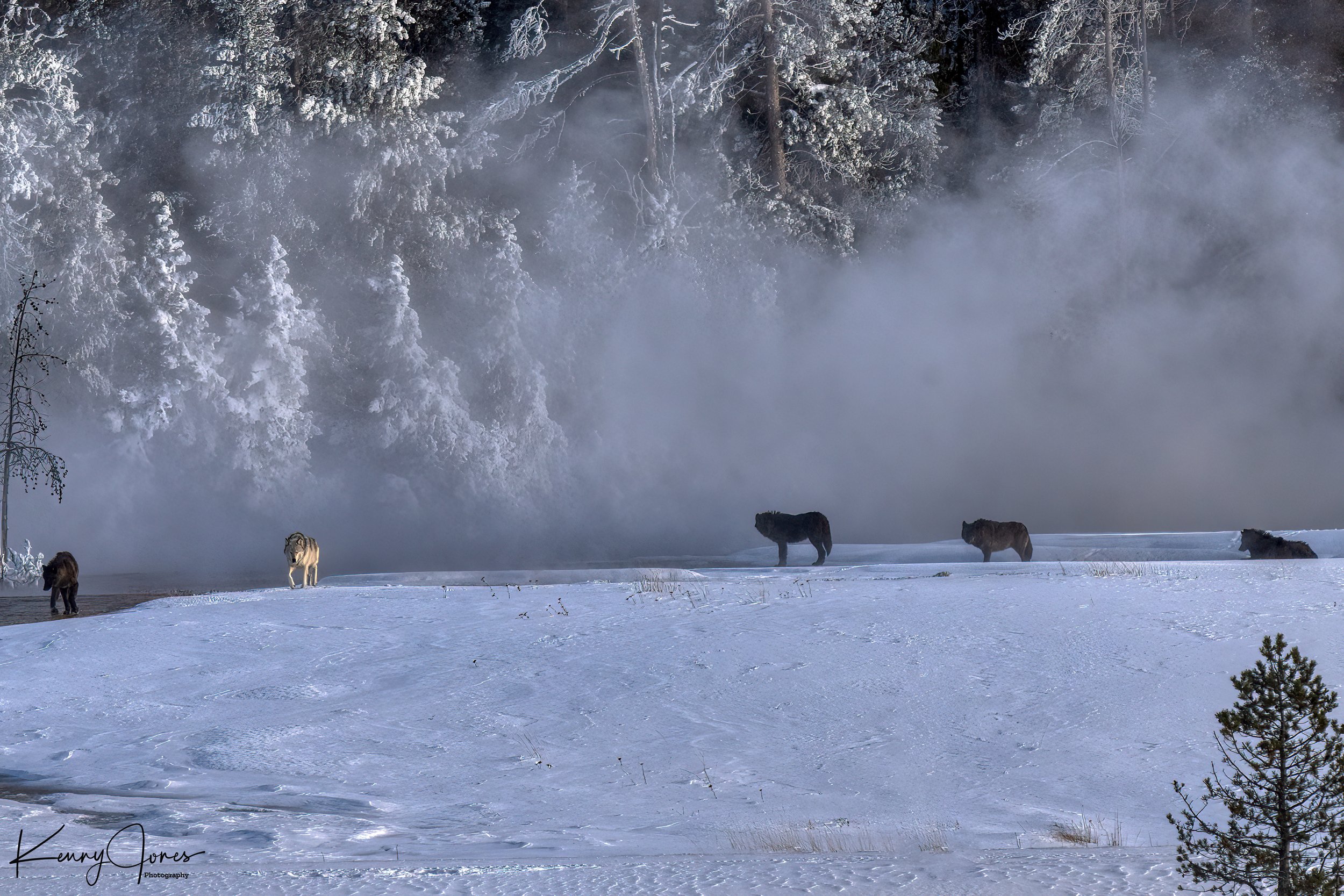American Bald Eagle
On a cold January day this sub adult Bald Eagle scans the Madison River looking for its next meal.
Typically it takes 4-5 years before the young eagle to develop the characteristic yellow bill with white head and tail of an adult.
A juvenile from the Wapiti Lake Pack in Yellowstone National Park.
In 1995, gray wolves were reintroduced to the park. The wolf population quickly expanded, and packs established territories. Elk numbers dropped, which helped to restore vegetation.
The story of gray wolf recovery in Yellowstone is hailed as one of the world's greatest conservation success stories., but many fear that the population is once again threatened. A growing number of people are calling for federal protections.
Follow Yellowstone National Park Tours for more.
Yellowstone Grand Canyon Lower Falls
Lower Falls, the biggest waterfall in Yellowstone, is the most famous in the Park, hands down.
The canyon’s colors were created by hot water acting on volcanic rock. It was not these colors, but the river’s yellow banks at its distant confluence with the Missouri River, that occasioned the Minnetaree Indian name which French trappers translated as roche jaune, yellow stone.
The snow nose knows.
A young member of the Wapiti Lake pack walks along the roadway in Yellowstone National Park to catch up with the rest of the pack while photographers are glowing with excitement.
Yellowstone's Bison
Yellowstone National Park is the only place in the U.S. where bison have continuously lived since prehistoric times.
What makes Yellowstone’s bison so special is that they’re the descendants of early bison that roamed our country’s grasslands.
In 2023, Yellowstone’s bison population was estimated at 4,800—making it the largest bison population on public lands.
This population is allowed to roam relatively freely over the expansive landscape of Yellowstone National Park and surrounding areas.
Time to Fly.......
This flock of Trumpeter swans along the Yellowstone River take flight.
Trumpeter Swans are the largest of the native waterfowl in North America, and one of our heaviest flying birds, the Trumpeter Swan was almost driven to extinction early in the 20th century.
Bison has a lengthy history of resilience and endurance
With an estimated population of 60 million in the late 18th century, the species was culled down to just 541 animals by 1889 as part of the subjugation of the Native Americans, because the American bison was a major resource for their traditional way of life (food source, hides for clothing and shelter, and horns and bones for tools).
Recovery efforts expanded in the mid-20th century, with a resurgence to roughly 31,000 wild bison as of March 2019.
Bison stampede along Gibbon River
The steam from a fumarole, (the hottest feature with a limited amount of water flashes to steam before reaching the surface) intensifies the bison seen running down rhe road near Gibbon River in Yellowstone.
Juvenile Bald Bagle
A juvenile bald eagle enjoys a fish while the parents keep a watchful eye after teaching their offspring on how to survive in this world.
Wapiti Lake Pack
Wapiti pack within Yellowstone National Park are one of ten packs in the park. Wolf watching represents about a 2 billon dollar boost into local economies.
People from all over the globe come to feel this exhilaration.















